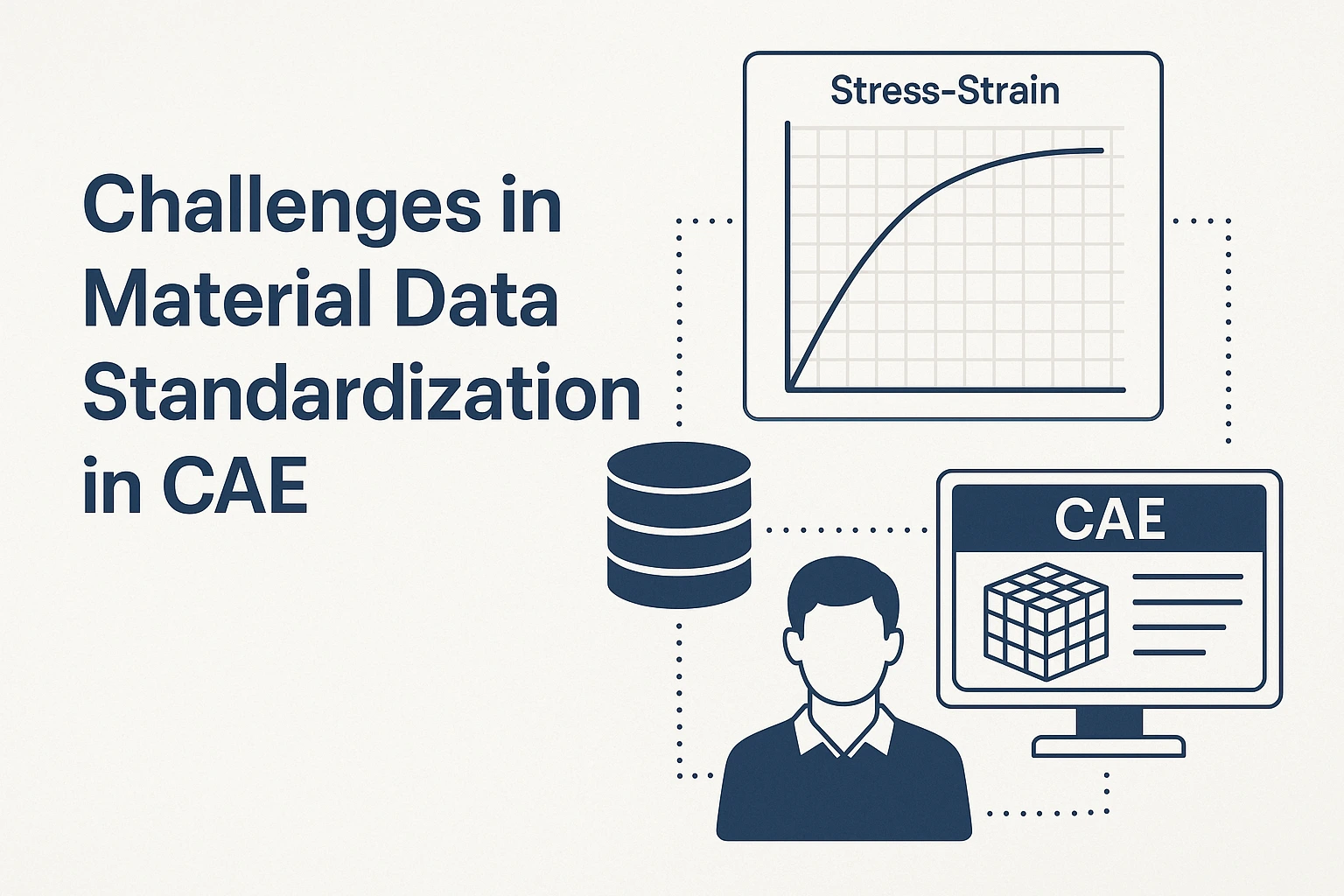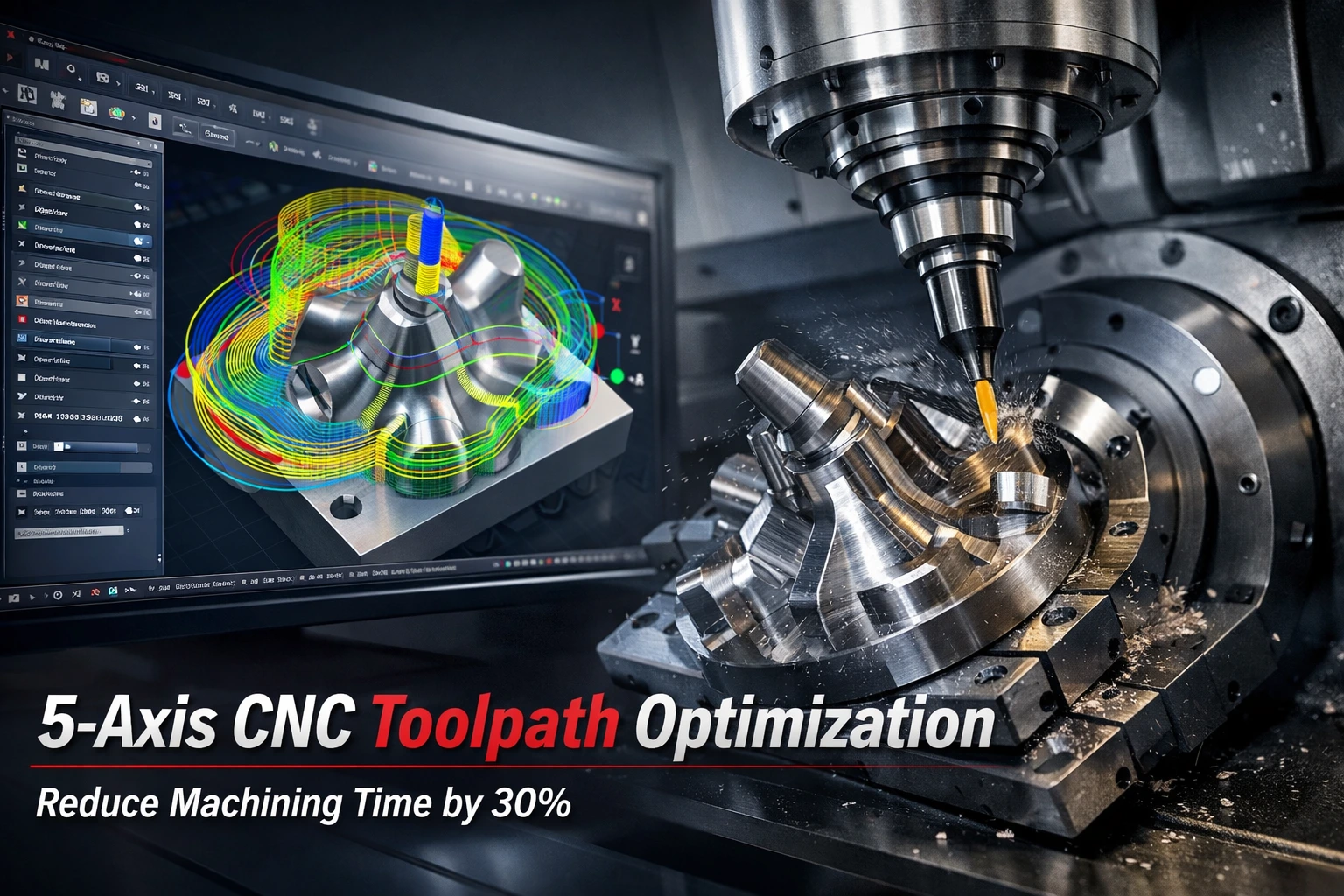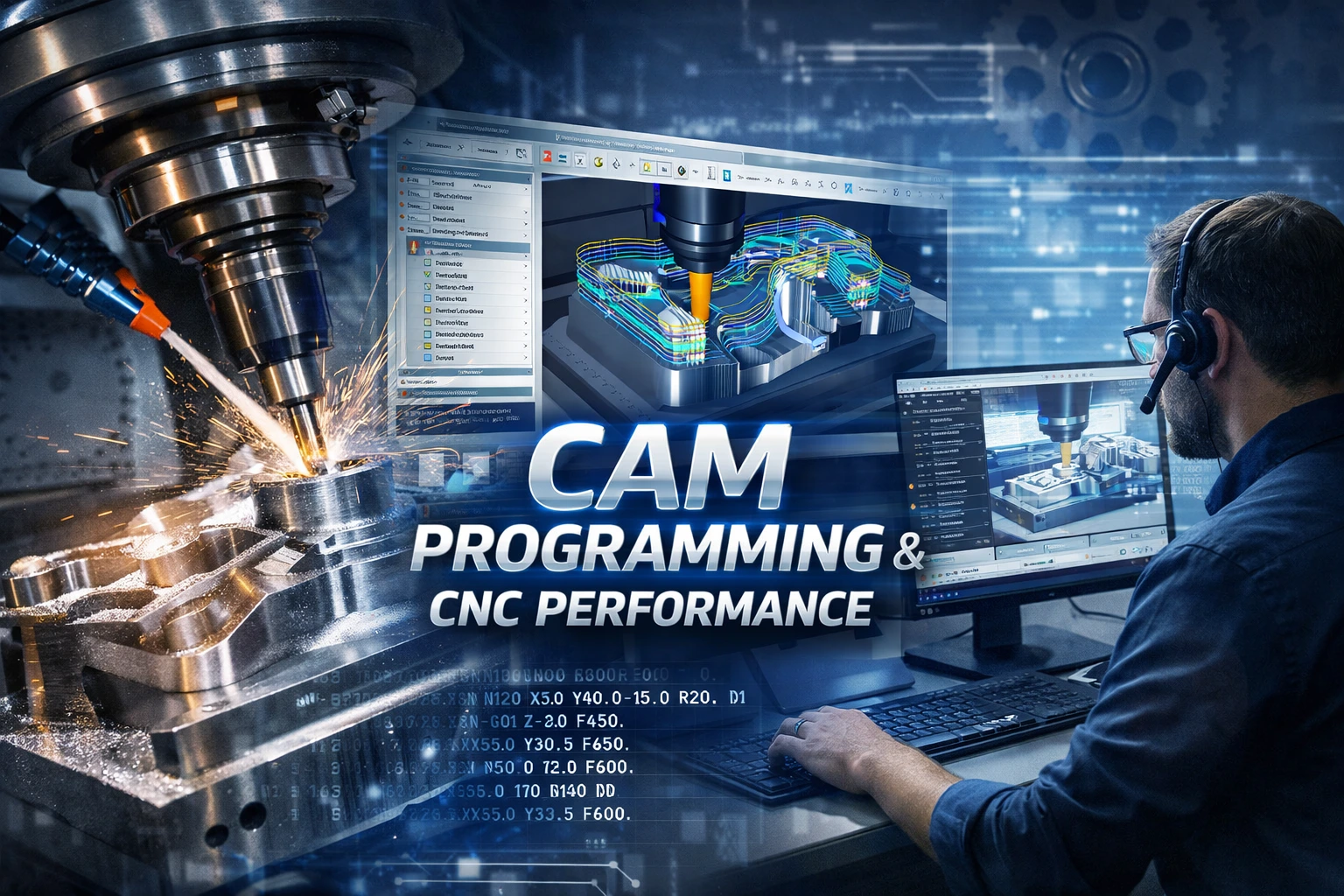In the world of Computer-Aided Engineering (CAE), material data is a critical factor that directly affects the accuracy of simulations. However, ensuring consistent, complete, and reliable material data across various simulation tools remains a major challenge for engineers and organizations alike.
This article explores the key challenges in material data standardization for CAE, and how TASVINA supports engineering teams in overcoming them to enhance their digital simulation workflows.
Diversity and Nonlinearity of Materials
Modern CAE simulations deal with a wide range of materials—metals, polymers, composites, elastomers, and smart materials—each exhibiting unique mechanical and thermal behaviors.
Accurate modeling requires not only basic parameters such as Young’s modulus or yield strength, but also advanced nonlinear properties like viscoelastic coefficients, rate dependence, and temperature effects.
Standardizing data across such diverse material types demands a well-defined framework that captures all these characteristics consistently.
Data Collection and Reliability Issues
Material data often comes from multiple sources—laboratories, suppliers, or public databases—and may not always follow the same testing conditions or standards (ISO, ASTM, etc.).
For instance, a standard tensile test may not represent a material’s true behavior under multiaxial stress or dynamic loading. Without supplementary tests like compression or shear, simulation parameters can be incomplete or misleading.
Ensuring the reliability and traceability of data is therefore essential for credible simulation results.
Lack of Unified Formats and Units
Each CAE platform (e.g., Abaqus, Ansys, LS-Dyna, MSC Nastran) uses its own input format and data structure for material models. A parameter correctly defined in Abaqus might produce inconsistent results in Ansys if units or strain definitions are mismatched.
That’s why companies need internal standardization rules—including consistent units (MPa, °C, true strain) and metadata definitions—to ensure compatibility across all tools and departments.
Data Traceability and Security
In many organizations, material data is still managed using spreadsheets or stored on local drives. This leads to issues of data loss, version inconsistency, and unclear provenance.
Implementing a Material Data Management System (MDMS) allows teams to store, track, and share data centrally, ensuring version control, access management, and full traceability across projects.
Model Calibration and Compatibility
Once raw material data is collected, engineers must perform parameter fitting to translate experimental data into simulation-ready material models (plasticity, viscoelasticity, hyperelasticity, etc.).
This step is often complex, especially when datasets are incomplete. Different CAE solvers also handle interpolation and convergence differently, which can lead to discrepancies if not properly calibrated.
Expertise in both testing and modeling is critical to achieve reliable results.
Communication Gaps Between Teams
A common issue in engineering organizations is the communication gap between material scientists and CAE analysts.
For example, the same term “tangent modulus” may refer to different quantities depending on the context. Without standardized documentation and naming conventions, misinterpretations can occur easily.
Clear communication protocols, shared terminology, and regular cross-team workshops are essential for smooth collaboration.
Scaling Data Management in Large Organizations
When a company handles hundreds of materials and multiple projects simultaneously, managing updates and revisions becomes increasingly difficult.
Without automated systems, different projects might end up using inconsistent datasets, reducing efficiency and reliability across the organization.
Centralized management and validation workflows help maintain data quality at scale.
TASVINA’s Engineering Solutions
As a trusted provider of CAE and engineering simulation solutions in Vietnam, TASVINA helps organizations address these challenges with a comprehensive approach to material data standardization and simulation process integration.
Our key services include:
🔹 Material Data Management System (MDMS) Implementation – Centralized storage and sharing of validated material data.
🔹 CAE Workflow Integration – Ensuring compatibility between different simulation tools (Abaqus, Ansys, LS-Dyna, etc.).
🔹 Material Model Fitting & Calibration Support – Translating test data into simulation-ready parameters.
🔹 Process Consulting & Internal Standard Setup – Establishing consistent naming, units, and data handling policies.
🔹 Technical Training for Engineering Teams – Bridging the knowledge gap between material testing and CAE modeling.
With TASVINA’s expertise, organizations can reduce modeling errors, accelerate simulation workflows, and build a reliable engineering data foundation for long-term innovation.
Conclusion
Standardizing material data in CAE is not merely a technical task—it’s a strategic initiative that ensures simulation reliability and design efficiency.
By combining robust data management systems, well-defined internal standards, and expert CAE integration from TASVINA, companies can achieve a unified, traceable, and scalable material database that empowers smarter engineering decisions.
🔗 Explore TASVINA’s CAE Solutions
👉 Visit Tasvina.com/en to discover how our simulation and engineering services can help your organization standardize material data and enhance simulation accuracy.













